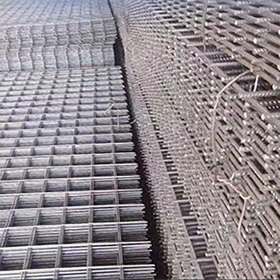Dec . 19, 2024 00:05 Back to list
Design and Construction of Mesh Retaining Walls for Enhanced Stability and Aesthetics
Mesh Retaining Walls A Sustainable Solution for Soil Retention
Retaining walls play a crucial role in modern landscaping and engineering, particularly for managing slopes, preventing soil erosion, and creating level areas for development. Among the various types of retaining walls available, mesh retaining walls are increasingly gaining popularity due to their unique structure, environmental benefits, and effectiveness in managing soil and water.
A mesh retaining wall is typically constructed using steel wire mesh and filled with suitable materials such as stones, earth, or concrete. This blend of materials creates a robust structure that provides support while allowing for natural drainage, which is vital in preventing water pressure buildup and subsequent structural failure. The open-frame design of mesh retaining walls also promotes greenery by encouraging vegetation growth, which further stabilizes the soil and enhances the wall's aesthetic appeal.
One of the most significant advantages of mesh retaining walls is their environmentally friendly nature. Unlike traditional concrete walls that can often lead to soil erosion and require substantial energy and resources for production, mesh retaining walls utilize natural materials that blend seamlessly into the surrounding landscape. This reduces the carbon footprint of construction projects and contributes to sustainable land management practices. Moreover, the permeability of mesh walls allows water to flow through, reducing the risk of flooding and erosion whilst promoting groundwater recharge.
The design of a mesh retaining wall is versatile, allowing it to adapt to various terrains and landscaping requirements. Engineers can customize the height, length, and fill material, ensuring that the wall meets the specific needs of the site. One common application of mesh retaining walls is in highway and railway construction, where they serve to stabilize steep embankments and prevent landslides. Furthermore, they are appropriate for residential projects, providing an attractive solution for terraced gardens and raised flower beds.
mesh retaining wall

Constructing a mesh retaining wall is a cost-effective solution compared to traditional methods. The materials are generally less expensive, and the installation process can be faster and more straightforward. Builders do not need specialized equipment, and with adequate planning and design, the wall can be constructed with minimal labor costs. This efficient construction process makes mesh retaining walls an appealing choice for both commercial and residential projects.
Another essential aspect of mesh retaining walls is their adaptability over time. Natural landscapes change due to shifting soil compositions, moisture levels, and vegetation growth. A mesh retaining wall’s flexibility allows it to adjust to these changes without losing its integrity. If additional soil is needed or if the vegetation around the wall is altered, adjustments can be made relatively easily.
However, despite their numerous advantages, there are some considerations to keep in mind. Proper engineering and design are essential for ensuring structural stability, especially when dealing with groundwater or the potential weight of cars or heavy machinery nearby. It is crucial to select appropriate fill materials and to undertake site evaluations to assess soil conditions and drainage patterns. Consulting with a qualified engineer can help mitigate potential risks associated with inadequate design.
In conclusion, mesh retaining walls represent a practical and sustainable approach to soil retention and landscaping. Their combination of strength, environmental compatibility, versatility, and cost-effectiveness makes them an attractive solution for various construction projects. As society continues to prioritize environmentally sustainable building practices, the popularity of mesh retaining walls is likely to rise. Ultimately, by incorporating innovative designs and materials, mesh retaining walls provide a way to blend functionality with ecological responsibility, ensuring that our landscapes remain stable and beautiful for generations to come.
-
Reinforcing Mesh: Core Material of the Construction Industry
NewsJul.07,2025
-
Welded Wire Fabric Reinvented for Modern Projects
NewsJul.04,2025
-
Superiority of Stainless Steel Woven Mesh
NewsJul.04,2025
-
Key Types of Razor Wire and Their Applications
NewsJul.04,2025
-
Durable Metal Fence Types for Security
NewsJul.04,2025
-
Best Materials for Livestock Fence
NewsJul.04,2025
products.







